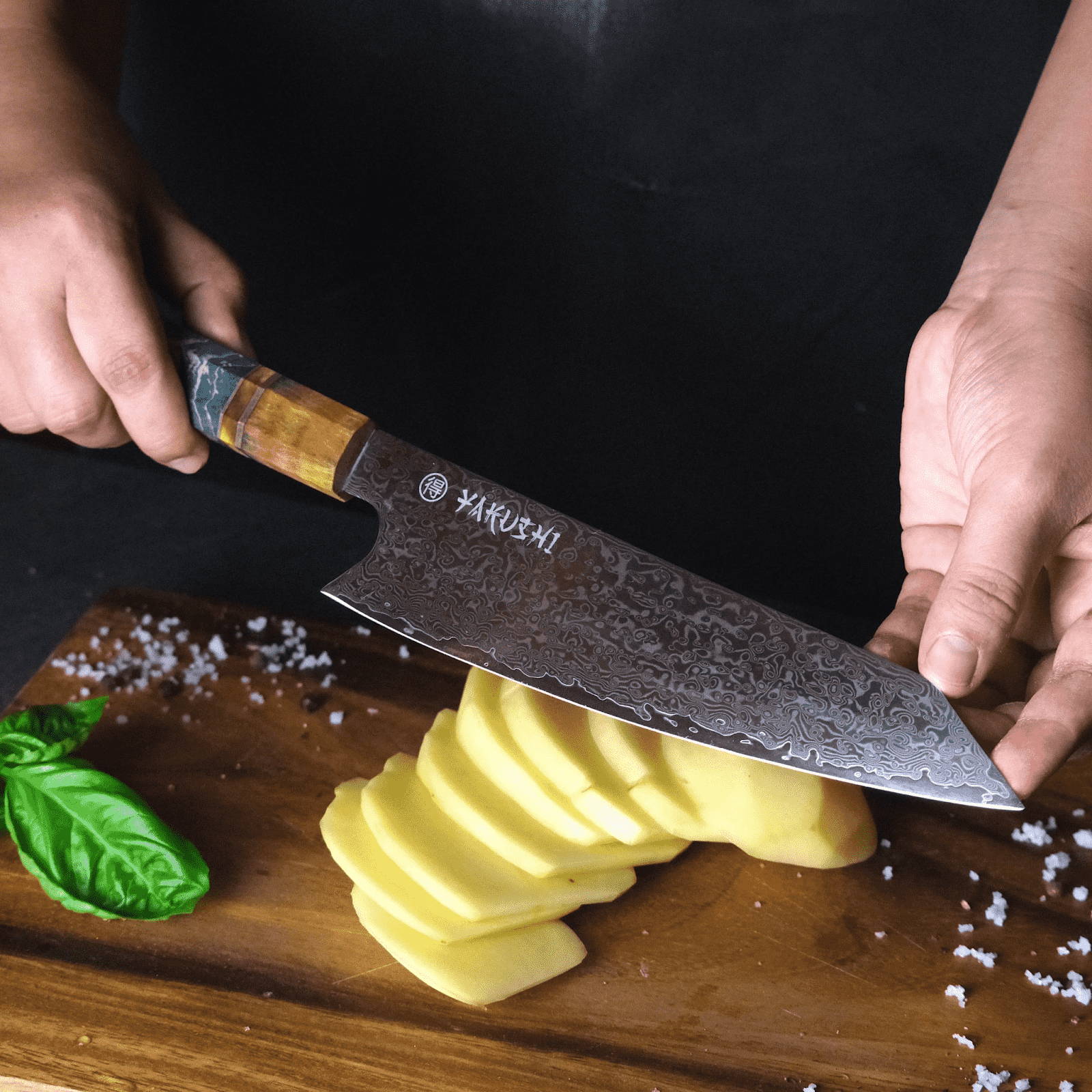Things That Can Damage Your Japanese Knife
| Knowing Appropriate Use

Common Factors That Can Damage Your Japanese Knife
Improper Storage
- Storing them directly after washing them in humid conditions may lead to rust.
- Placing them near a hot stove may subject them to sudden changes in the temperature, which can cause a slight bend in the knives.
- The sheath may seem like a convenient storage option, but its made up of rough material which can scratch the delicate blade.
Excessive Force
- Twisting and Drying, especially during cutting complex food products or opening the lids, can bend the blades while compromising their functionality.
- Applying extreme side pressure while chopping can dull the edge of your Japanese blade unevenly.
- Putting excessive pressure on the tip while cutting downwards or forcefully chopping food items like chicken, etc, can result in the chipping of the edge.
Inappropriate Cutting Surfaces
- The metal cutting board provides a highly rough surface that has the potential to cause nicks.
- The stone or granite countertops provide a hard surface that can easily crack your blade.
Improper Cleaning and Maintenance
- Abrasives and harsh cleaners like bleach, detergents, etc., can remove the protective patina and leave various marks.
- A dishwasher that includes a jostling experience and high heat can lead to rust formation and loosening of the handle.
Appropriate Usage
Utilize knives To Its Full Potential
- The first thing to be careful about is utilizing the right Japanese knife for the right task i.e., using the boning blade for the boning task and chopping knife for the chopping task.
- Apply up and down motion while using the blades without exerting any force.
- Employ a wooden cutting board while avoiding marble, as they may damage the wedge.
- Ensure to immediately wash and dry your blade manually to avoid corrosion.
Proper Storage Facilities
- The knife blocks known for having various slots are specifically designed to protect your Japanese knives as they prevent your blades from getting exposed to the air. Thus avoiding any rust formation.
- Magnetic strip is another popular option for storing your high-quality Japanese knife collection. These are installed on the wall where your blades magnetically stick.
Maintenance
- Use the correct sharpener, speed, and accurate angle for your Japanese knives while employing the right techniques. However, you should only sharpen the blades when they start losing the ability to perform clean cuts or when you have to apply some pressure.
- The wooden handle should also be maintained with the help of wax or oil, which may contribute to extending the lifespan of these knives.




Leave a comment
This site is protected by hCaptcha and the hCaptcha Privacy Policy and Terms of Service apply.